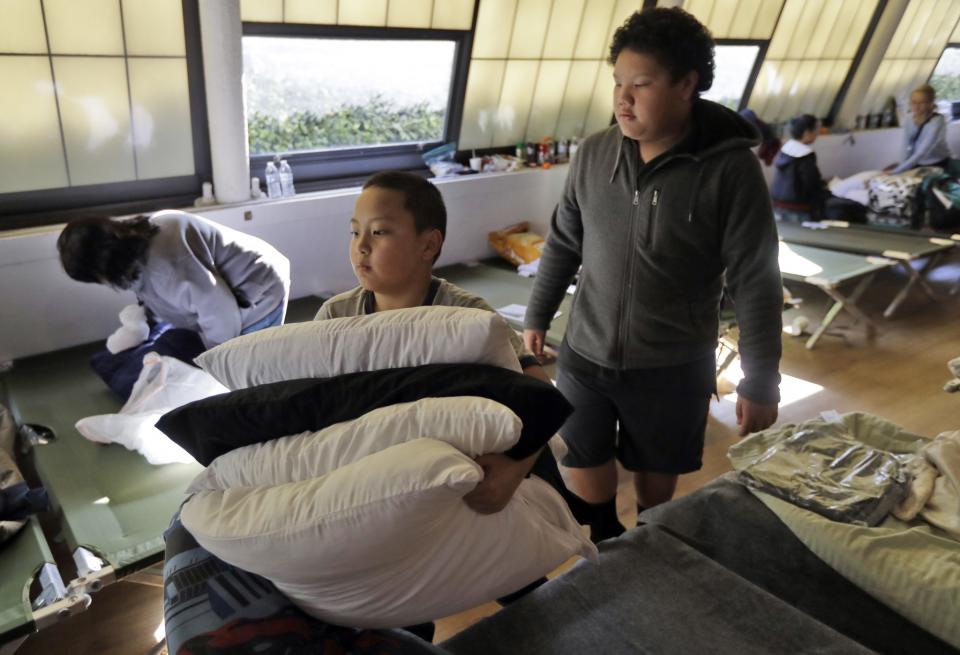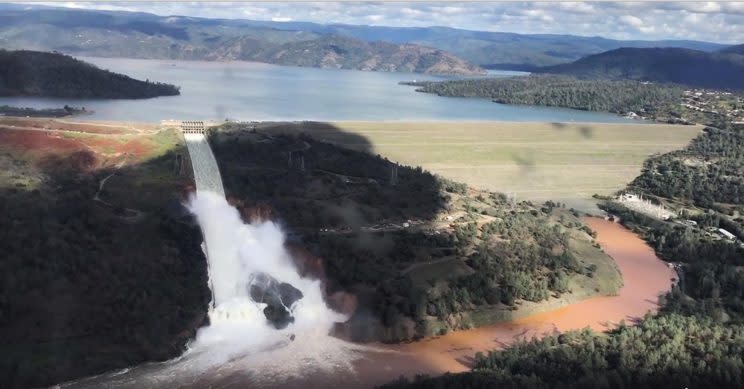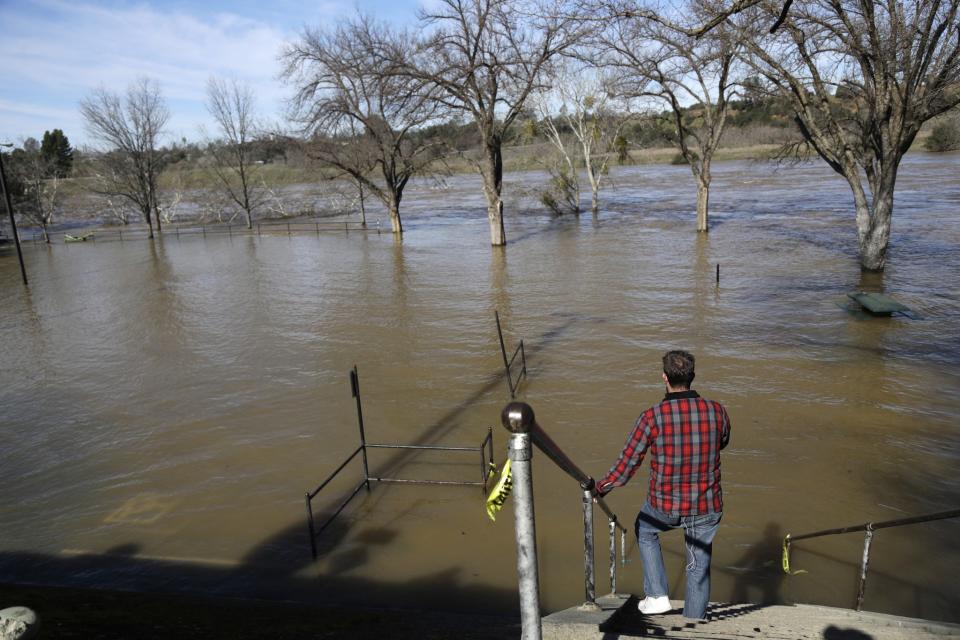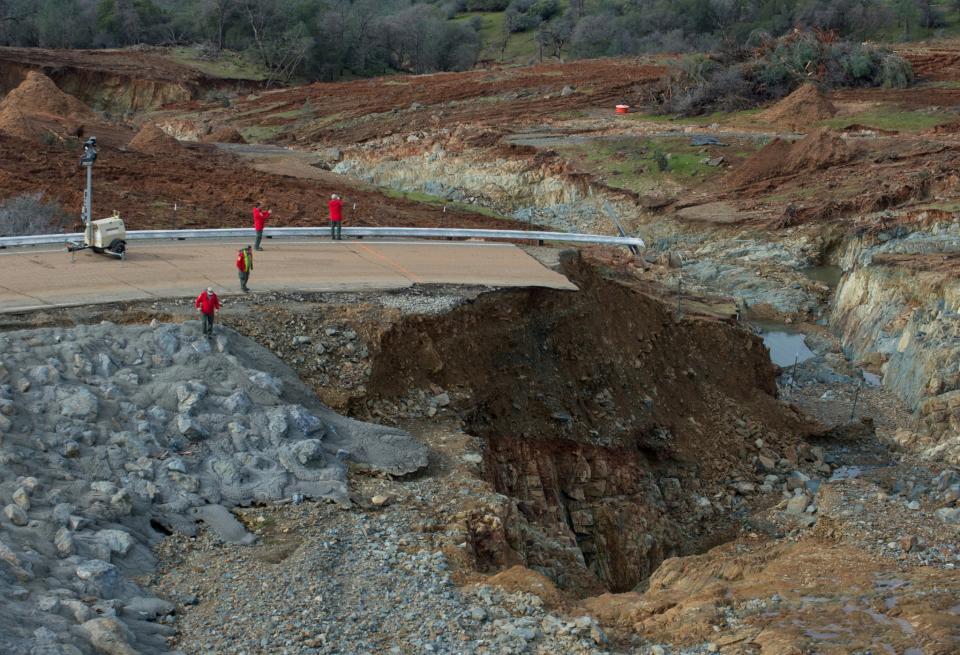If Trump wants to make America great again, he can start by fixing the Oroville Dam
Last November tens of millions of Americans voted for Donald Trump precisely because he wasn’t a normal politician — and so far, his presidency hasn’t proved them wrong.
But can Trump act like a more normal president when circumstances require it? The Oroville Dam crisis in Northern California is a perfect test.
In case you haven’t been following the news, here’s a quick recap.
The Oroville Dam is the tallest dam in the nation. It was completed in 1968. It’s located between Sacramento and Chico. All winter, record-setting storms have been pummeling the Golden State; in fact, so much rain has fallen in the area that the reservoir behind the Oroville Dam recently rose 50 feet in a matter of days.
Earlier this month, operators tried to reduce pressure on the dam by releasing water over a concrete spillway. That’s when they discovered a huge crater in the concrete. Even so, they continued to use the spillway — and the damage got worse. On Friday, the gash was 45 feet deep, 300 feet wide, and 500 feet long.
Slideshow: Damaged dam threatens northern California towns >>>
There’s an auxiliary spillway at Oroville too, but it had never been used before, mainly because it’s just an unpaved hillside. Last week, however, it was finally pressed into service. The hope was that operators could use the backup spillway to lower the water level in Lake Oroville while working to repair the primary spillway. On Sunday, however, they noticed that the backup spillway was starting to erode.
This was a potentially deadly problem: If the slope crumbled, it would send a 30-foot wall of water barreling downriver, threatening lives and obliterating communities throughout Butte, Yuba and Sutter counties. The authorities immediately issued a mandatory evacuation order for nearly 200,000 people. “This is NOT A Drill. This is NOT A Drill. This is NOT A Drill,” the Butte County Sheriff’s Office warned on its Facebook page.

With more than 100,000 local residents still displaced, crews are now rushing to repair the spillways before even more rain arrives in the region later this week. (The evacuation order was finally lifted Tuesday afternoon.)
So what does this have to do with President Trump?
There are two answers to that question: one short term, one longer term. Both give Trump the opportunity to demonstrate that his presidency can be more than non-stop disruption and controversy.
Let’s start with the short term. On Monday, California Gov. Jerry Brown officially requested a federal emergency declaration to assist in the potential failure of the Oroville spillway, saying that the situation is “of such severity and magnitude that continued effective response is beyond the capabilities of the state and affected local governments and supplemental federal assistance is necessary to save lives and to protect property, public health and safety, and to lessen the effects of this serious situation.”

There’s only one person who can approve such a request: President Trump.
Trump didn’t have to greenlight Brown’s request. FEMA and the California National Guard are already on the scene, and presidents deny this sort of disaster request all the time, for all sorts of reasons. (For instance: Barack Obama said no to Florida Gov. Rick Scott when he requested that the Federal Emergency Management Agency help with an algae problem, and he also refused to declare a federal emergency over the water crisis in Flint, Mich.)
But a normal president would consider California’s plea for help on its merits and decide how to proceed accordingly.
The early thinking — and this goes to show how far American politics have strayed from “normal” in the Age of the Donald — was that President Trump might not. Trump and Brown — not to mention Trump and the rest of California’s Democratic politicians — have been feuding since the day he was elected, with Brown telling Trump not to interfere with California’s progressive policies and Trump threatening to cut off the state’s federal funding in response. (“California is in many ways out of control,” Trump told Bill O’Reilly.)

AP)
“California’s Battle With Trump Could Impact Disaster Aid Request,” read a headline from CBS San Francisco. (“It is possible that Trump will take this opportunity to remind Brown of California’s independent streak, and say no or approve a limited declaration,” the story added.)
By Tuesday there were some positive signs from Washington, D.C., with White House press secretary Sean Spicer announcing that “the president’s been keeping a close eye on the Oroville Dam situation in California.”
(Late Tuesday, after this article was scheduled to be published, the administration finally approved Brown’s request.)
But while Trump has found time since Sunday to tweet about how Mark Cuban is “not smart” and how “Obamacare continues to fail,” he himself hasn’t said a word about the Oroville Dam. Trump’s silence isn’t normal, and it helped perpetuate the idea that he would somehow limit the federal government’s assistance to the ordinary people of Butte, Yuba and Sutter counties — most of whom voted for Trump, incidentally — just to spite the progressive politicians who run California.
As the New York Times’ Los Angeles bureau chief Adam Nagourney recently tweeted, “Is California request to Trump for emergency declaration on Oroville Dam the first test of whether CA Dems pays price for attacks on WH?”
That’s not a normal question to have to ask.
In the short term, then, Oroville presented Trump with an opportunity to show that he isn’t the sort of president who withholds aid in times of crisis to punish states that disagree with him politically. In the longer term it presents him with an even bigger opportunity — the opportunity to show that he’s serious about making America’s infrastructure great again.
During the campaign, Trump pledged that he would spend $1 trillion on infrastructure if elected. Partisans on both sides of the aisle were cautiously optimistic, seeing a rare chance for compromise.
But so far Trump has been too busy sparring with Arnold Schwarzenegger, leaving key appointed positions unfilled, and indulging in exactly the kind of unilateral executive orders for which he criticized Obama to actually try to muscle an infrastructure package through Congress.

A normal president might seize on the dire news from Oroville to start enacting the legislative agenda he campaigned on. After all, concerns about the spillways have been raised before, and both state and federal officials failed to intervene. As Bloomberg View’s Conor Sen recently put it, this provides the president with the “perfect Trumpian setup — a crisis brought about by bad infrastructure [and left] unaddressed by ‘all talk, no action’ politicians.”
Trump hasn’t said anything directly yet. But Spicer did mention the issue during Tuesday’s press conference.
“The situation is a textbook example of why we need to pursue a major infrastructure package in Congress,” he said. “Dams, bridges, roads and all ports around the country have fallen into disrepair. In order to prevent the next disaster, we will pursue the president’s vision for an overhaul of our nation’s crumbling infrastructure.”
Democrats might (correctly) point out that Trump’s campaign proposal would do little to repair the 14,726 dams currently classified by FEMA as “high hazard potential.” “Trump’s plan largely means privatizing infrastructure development through the use of tax credits,” writes Citylab’s Kriston Capps. “Armoring the Oroville Dam’s emergency spillway isn’t the kind of investment likely to lure profit-minded private developers.”
But perhaps the scary situation in Oroville will inspire the president to dig in and revise his plan, in consultation with Congress, so that it really will “prevent the next disaster.”
Or at least that would be the normal thing to do.
Update, 9 a.m. ET.: This article has been updated to reflect recent news developments.
_____
Read more from Yahoo News:



